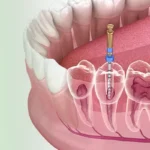Cataracts affect vision by clouding your eye’s lens, making objects appear blurry or hazy. Cataracts develop slowly over time, so getting prompt treatment can protect and restore your vision. Here are some symptoms that indicate it is time to explore cataract surgery options:
Blurred Vision
Cataracts scatter incoming light to the eye, causing blurred or cloudy vision. Seeing through cataracts is like looking through a foggy windshield. If you have cataracts, you may notice difficulty seeing details in low light. If you detect growing blurry patches, schedule an eye exam to find out if cataracts are disrupting your visual clarity and contrast.
Light Sensitivity
Cataracts cause sensitivity to sunlight, glare, and headlights. This impacts daytime driving and vision in indoor lighting. If bright lights make you squint or cause discomfort, it may be caused by cataracts. If you notice an increased sensitivity to light, schedule an exam with your vision care provider. Surgery removes the cloudy lens to restore normal visual processing and reduce light sensitivity.
Night Vision Difficulties
Cataracts can lead to reduced contrast sensitivity at night, making nighttime driving risky. Impaired night vision means you may struggle to see objects in dim conditions. Cataract operations enhance night vision by improving how your eyes process low-light details. If you see glares or halos around lights and automobile headlights at night, speak with an eye doctor to learn more about improving your night vision.
Color Perception
Cataracts can mute the brightness and intensity of colors. As cataracts develop, you may start seeing whites as dull yellows. Fading colors show deteriorating lens transmission. Cataract surgery can restore color perception by removing the cloudy lens. If colors appear duller than you remember, it may be time to have your eyes checked for cataracts. Restoring vivid hues enhances your visual quality.
Double Vision
If you experience persistent double vision in one or both eyes, get your eyes tested for cataracts. Cataracts can cause you to see double or ghost images. This indicates visual disruption within the eye’s lens. Remove the cataract to restore clarity if shadowy images appear different than what you know they are. Recognizing double vision as a cataract red flag helps you make informed choices for your eye health.
Prescription Changes
Significant changes in eyeglasses or contact lens prescriptions are an indicator that you should explore surgery options. As cataracts progress, your current prescription may no longer correct your vision. Intensified blurriness means you’ll need stronger lenses. If your prescription strengths frequently increase, it may indicate cataract development. Removing the cloudy lens through surgery helps stabilize your vision and reduce correction needs.
Eye Changes
Advanced cataracts may become visible as a white or yellowish film over the pupil. This indicates impaired lens transparency. If your pupil looks hazy instead of dark, get an eye exam to determine if cataracts are the cause. Monitoring visible eye changes will help you seek cataract treatment before your visual quality diminishes further.
Schedule Cataract Surgery
Getting cataracts checked by an ophthalmologist determines if surgery will help your vision. You can restore your vision and quality of life by having cataracts removed and intraocular lenses implanted. Contact an eye surgeon today to learn more about whether you’re a good candidate for a cataract procedure.







